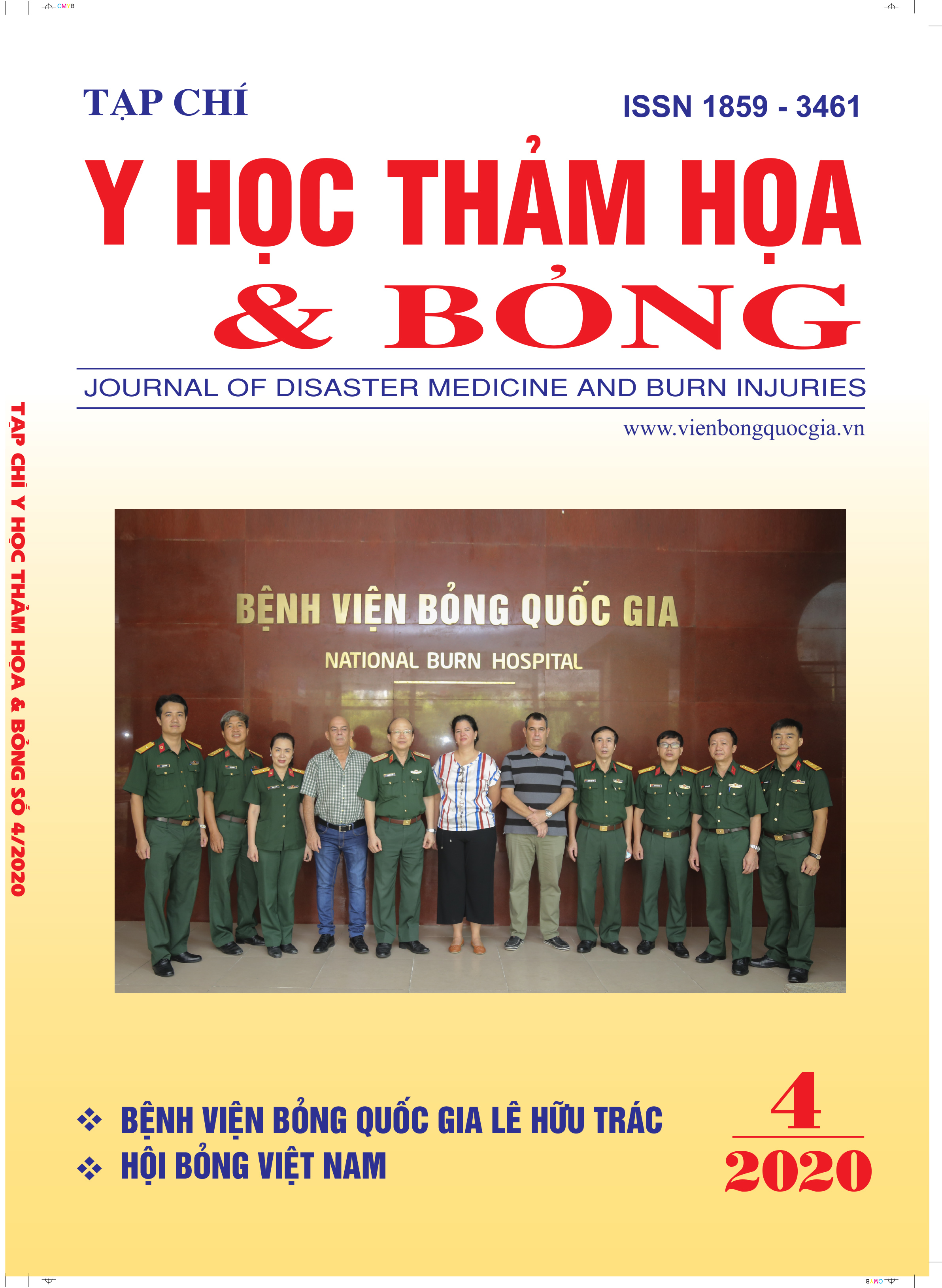Characteristics of burns in children under six-years-old admitted to the National Burn Hospital.
Main Article Content
Abstract
Aims: This study aims to comment on some epidemiological, clinical characteristics, and treatment outcome in children aged up to six years, patients were hospitalized at the Le Huu Trac National Burn Hospital from 2017 to 2019.
Materials and methods: Retrospective, statistical and descriptive research based on medical records of burn patients from January 2017 to December 2019 at Le Huu Trac National Burn Hospital.
Results: 3,551 under-6-year-old patients were hospitalized in Le Huu Trac National Burn Hospital from 2017 to 2019, in which the ratio of male and female was 1.68/1. The most common ages ranged from 1 to 2 years (54.88%) and the most common cause was hot water (86.11%). Respiratory, digestive, eye burn, and combining trauma took a minor rate (under 0.5%).
The average hospitalization length was 16.62 ± 13.08 days, which was longer in dry heat, electric, huge and deep burn patients. The mortality rate was 0.51%.
Conclusion: Pediatric burns were a common emergency and the treatment result in National Burn Hospital was good with a low mortality rate.
Article Details
Keywords
Burn, under-6-year-old children, epidemiological characteristics
References
2. Taal LA, Faberb AW. Posttraumatic stress and maladjustment among adult burn survivors 1-2 years postburn. Burns 1998; 24: 285-292.
3. Drago DA. Kitchen scalds and thermal burns in children five years and younger. Pediatrics; 115: 10-16.
4. Aysun Balseven-Odabas, Ali Riza Tumeri, Alper Keten at all. Burn injuries among children aged up to seven years. The Turkish Journal of Pediatrics 2009; 51: 328-335
5. Fukunishi K, Takahashi H, Kitagishi H, et al. Epidemiology of childhood burns in the critical care medical center of Kinki University Hospital in Osaka Japan. Burns 2000; 26: 465-469.
6. Mashreky SR, Rahman A, Chowdhury SM, et al, Epidemiology of childhood burn yield of largest community-based injury survey in Bangladesh. Burns 2008, 34: 856-862.
7. Goldman S, Aharonson-Daniel L. Childhood Burns in Israel: a 7-year epidemiological review. Burn 2006; 32: 467-472.
8. Ramakrishnan KM, Sankar J, Venkatraman J. Profile of the pediatric burns Indian experience in a tertiary care burn unit. Burns 2005; 31: 351-353.
9. Nguyễn Thống, Đặng Tất Thắng. Đánh giá thực trạng tai nạn bỏng trẻ em tại khoa Bỏng, Bệnh viện Saint Paul Hà Nội trong 5 năm từ 2010 đến 2014; Tạp chí Y học thảm họa và bỏng; 2/2015; p: 30-35.
10. Nguyễn Viết Hải, Nguyễn Thị Thu Hoài. Đánh giá kết quả điều trị bỏng tại Bệnh viện Nhi Thanh Hóa từ tháng 7/2013 đến tháng 6/2014; Tạp chí nghiên cứu và thực hành nhi khoa; số 1 (2-2020), Tr: 52-56.
11. Fernandes FMFA, Torquato IMB, Dantas MAS, at all. Burn injuries in children and adolescents: clinical and epidemiological characterization. Rev Gaúcha Enferm. 2012; 33(4):133-141.
12. El-Badawy A, Mabrouk AR. Epidemiology of childhood burns in the burn unit of Ain Shams University of Cairo, Egypt. Burns 1998; 24: 728-732.


